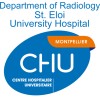
TDF Combined With LDT for the Treatment of HBeAg-positive Hepatitis B Patients With Poor Response...
Chronic Hepatitis BStudies have shown that the HBeAg seroconversion rate of HBeAg positive chronic hepatitis B with tenofovir for one year's treatment was 17.8% and the negative conversion rate of their HBeAg and HBV DNA were 20.0% and 97.6%. The HBeAg Seroconversion rate of these patients was lower.Clinically, most patients need to take tenofovir for a long time, which may cause serious complications such as renal function damage,with decreased therapy compliance and Increased cost of treatment.In the course of tenofovir treatment, it is common that HBV-DNA negative patients with HBeAg Being down poor or staying at a low positive level for a long time keep taking the medicine. Therefore, it is Significant to Increase the HBeAg seroconversion rate of tenofovir during the clinical treatment. Telbivudine has a strong antiviral effect.Studies have shown that the HBeAg seroconversion rate of HBeAg positive CHB for one year was 25%, which was higher than other nucleosides, and it could also improve the damaged renal function to a certain extent.The HBeAg seroconversion rate of patients with poor response to tenofovir for 12 months could be still poor if for 24 months . Therefore, this study is to observe the efficacy of these patients combined with telbivudine.

LDT Combined With TDF to Improve EGFR Decreasing in Patients With Chronic Hepatitis B Treated With...
Chronic Hepatitis BChronic hepatitis B (CHB) is an important public health problem in the world. There are still more than 250 million chronic hepatitis B virus (CHB) infected people in the world. Its preventive effect has reached a relatively ideal effect, but its therapeutic effect still has great room for improvement. Tenofovir(TDF) is the first-line antiviral treatment with good clinical efficacy. However, some patients who take TDF for a long time have different degrees of renal dysfunction, which limits the use of TDF in these patients. Tenofovir Alafenamide Fumarate (TAF) has better plasma stability and stronger liver targeting, and reduces the side effects of renal function damage and bone mineral density reduction. Telbivudine (LDT), a nucleoside analogue, has the advantages of rapidly reducing HBV viral load and high HBeAg seroconversion rate. In addition, prospective studies have shown that LDT can improve the estimated glomerular filtration rate (EGFR).Therefore, this study aims to explore the clinical study of LDT combined with TDF and TAF in patients treated with tenofovir and EGFR < 90ml / min / 1.72m².

Real World Study About Anti-viral Regimen Adjustment on Achieving Complete Response in CHB Patients...
Sustained Virologic ResponseHepatitis B1 moreIn the treatment of chronic hepatitis B (CHB), viral suppression is closely related to disease progression, and the lower the viral load, the lower the risk of progression to cirrhosis and hepatocellular carcinoma (HCC). In addition, a considerable number of patients in China are still using non-first-line antiviral therapy, such as adefovir dipivoxil, lamivudine, and telbivudine (ADV/LAM/LdT). About 25% of patients who received entecavir(ETV) treatment for more than half a year and confirmed that their DNA had turned negative by non-high-precision detection methods still had low viremia (LLV,DNA>20 IU/ml,IU=international unit), and LLV patients were twice as likely to develop HCC as patients with complete viral response.Patients who have received ETV or second-line NA(LAM/ADV/LdT) treatment for more than half a year to 1 year and confirmed HBV-DNA>10IU/ml by high-precision detection method are recommended to adjust the treatment plan in order to reduce the DNA load below 10IU/ml as soon as possible. It is up to the doctor, in consultation with the patient, to decide whether or not to make the adjustment.

Systematic Screening for Viral Hepatitis B and C at the PASS Consultation of the Montpellier University...
Hepatitis CHepatitis B1 moreA high number of people are infected by viral hepatitises B and C without knowing it, especially vulnerable population such as the ones who come in consultation in continuous health care access center (Permanence d'accès aux soins, PASS). Now that these infections can be rapidly treated, it is essential to diagnose them the quickest possible. The Identification and Diagnostic Orientation Test (Test de repérage et d'orientation diagnostique, TROD) technique is a rapid tool allowing to screen for hepatitis B and C by a simple capillary sample. The study aims to evaluate the accptability of a systematic screening using TROD for hepatitis B and C in adults in a PASS consultation in Montpellier. We also want to estimate the prevalence of theses infections in the population, to describe the HBV and HCV care cascades, to evaluate the acceptability of vaccinal catch-up for HBV, and to describe people with hepatits.

Follow-up Strategy of Chronic Hepatitis B for Early Detection and Diagnosis of Hepatocellular Carcinoma:...
Chronic Hepatitis BThis study is a randomized control prospective study. The aim of this study is to establish an all-round and convenient follow-up strategy of Chronic Hepatitis B for early detection and diagnosis of Hepatocellular Carcinoma (HCC), by investigating whether different surveillance time intervals and surveillance methods are beneficial for chronic hepatitis B and cirrhotic patients with different risk of HCC.

Incidence Of Hepatitis In Intensive Care Unit
Intensive Care UnitThe aim is to investigate incidence of HBsAg, anti-HCV in serum samples and evaluation of biomarkers taken from patients who were followed the intensive care unit of Sakarya University Training and Research Hospital and The intensive care unit attracts attention by making health workers more susceptible to the risk of hepatitis.

Patterns of Early Hepatitis C Virus Decline Predict the Outcome of Interferon Therapy (sIFN-pred2)...
Hepatitis CChronic2 moreThe purpose of this study is to validate the first round HCV early dynamics discovery within a larger population.

Observation Study of Prednisone and Cyclosporine in Treatment of Thrombocytopenia in Hepatitis B...
ThrombocytopeniaHepatitis B1 moreTo compare the safety and efficacy of 12 months of low dose prednisone with low dose cyclosporine combined with entecavir in patients with thrombocytopenia associated with HBV-related cirrhosis.

Impact of Cytomegalovirus (CMV) Replication Over Hepatitis C Recurrence in Liver Transplant Recipients...
Cytomegalovirus InfectionHepatitis CThe relationship between cytomegalovirus infection and recurrence of hepatitis C in liver transplant recipients remains controversial. Although some studies (Teixeira et al., 2000; Singh et al., 2005)have not found an association between recurrence of hepatitis C and CMV infection, studies such as Rosen et al. show that 50% of patients with CMV infection suffered cirrhosis durig follow-up period, while between not-infected patients the rate was 11%. To clarify this question, a non-interventional study will be carried out in order to assess if CMV replication is a risk factor for graft dysfunction in liver transplant recipients.

Case Control Study of Non Viral Hepatitis Relating to Herbal Drug Use in the Emergency Department...
Acute HepatitisThe use of traditional Chinese herbal medicine and various forms of alternative medicine to maintain health among the Chinese ethnic group has had a long history and has been deeply rooted in the Chinese way of living for centuries. It has been a general belief that these therapies consist of "natural" substances and are less toxic than their western synthetic drug counterparts. However, recent reports of side effects of systemic traditional Chinese medicine, including hypersensitivity, hepatotoxicity, neurotoxicity, cardiovascular toxicity, renal failure, and contact dermatitis, have been increasing. Since there is a high prevalence in the usage of traditional Chinese herbal medicine in Taiwan, this study examines the frequency of patients using herbal medicine whose initial diagnosis in the emergency department (ED) is acute non viral hepatitis. We, the researchers at National Taiwan University Hospital, then correlate if the cause of hepatitis is related to the use of these herbal drugs by taking a detailed history of medication or herbs used and by verifying the contents by chemical analysis of the "medications" used. To our knowledge, this is the first study in examining the relationship between non viral hepatitis and the use of herbal drugs prior to arriving at the ED. We expect to prove adverse effects of these substances, especially hepatitis, is the cause for requiring emergency care. Our study design is a prospective, density sampling case control study in which one hundred patients with non viral hepatitis will be recruited as our case. We use a questionnaire designed by the investigator in the survey of demographic background, education, and income status of the cases, as well as the frequency of use of the drug, total dosage used, where the drug was purchased, what the drug is used for, and whether they know of any adverse effect that the drug might have. If they had taken the drug within three months prior to this emergency visit, then they are asked to bring the drug in for examination. Examination of the drug includes the use of high performance liquid chromatography (HPLC) and if necessary, inductively coupled plasma mass spectrometry (ICP mass). In contrast, our control group consists of subjects that are admitted to the ED due to trauma or fracture. For each case, they are matched with two subjects in the control group in both gender and age. They should also arrive within two days after the arrival of the case. All cases and controls are screened for viral hepatitis and serology must be negative before entering the study. The questionnaire is given to both groups. If more than one control is eligible to enter the study, then the control is chosen by a random draw in a hat. After this use of density sampling, we collect the data and logistic regression is used for analysis.
